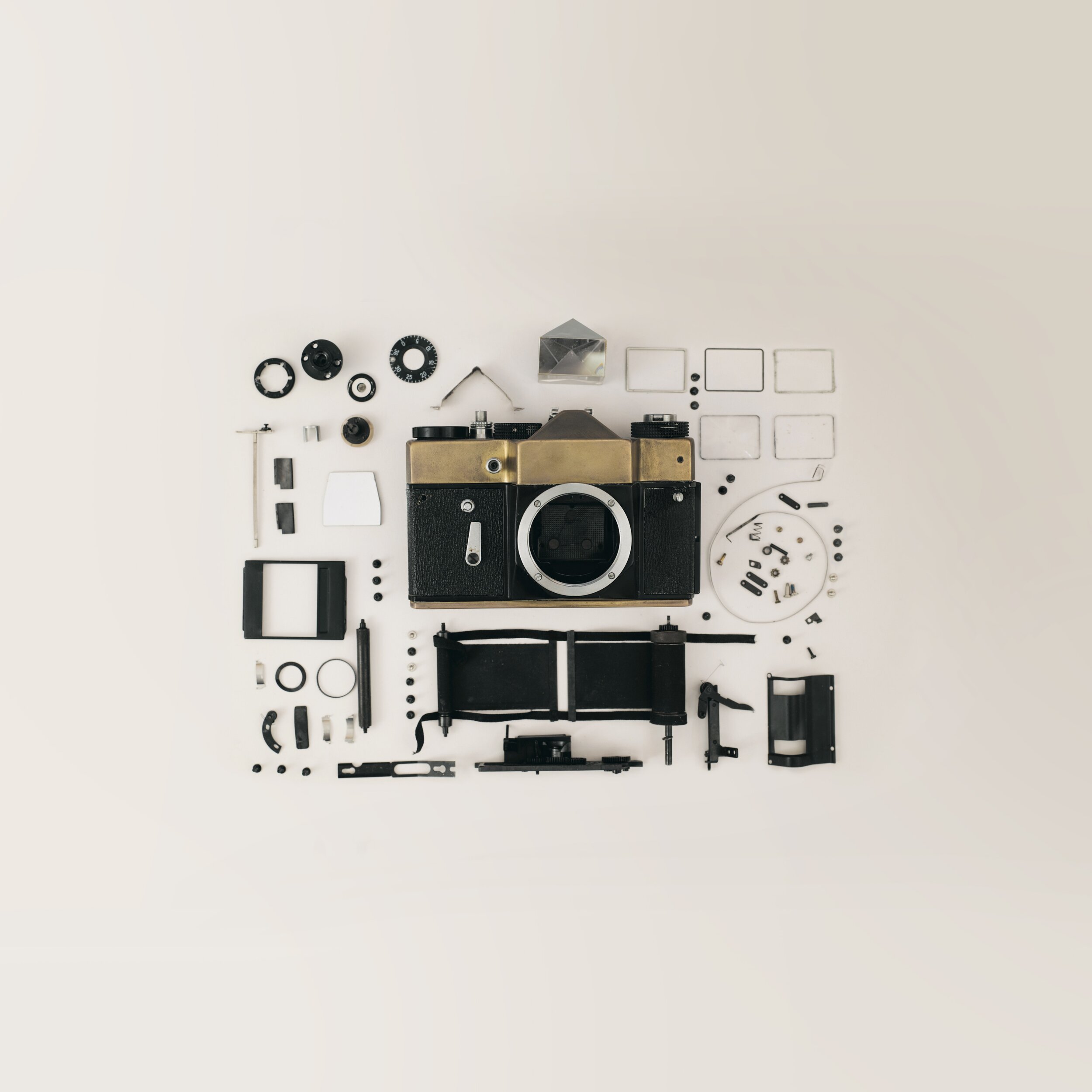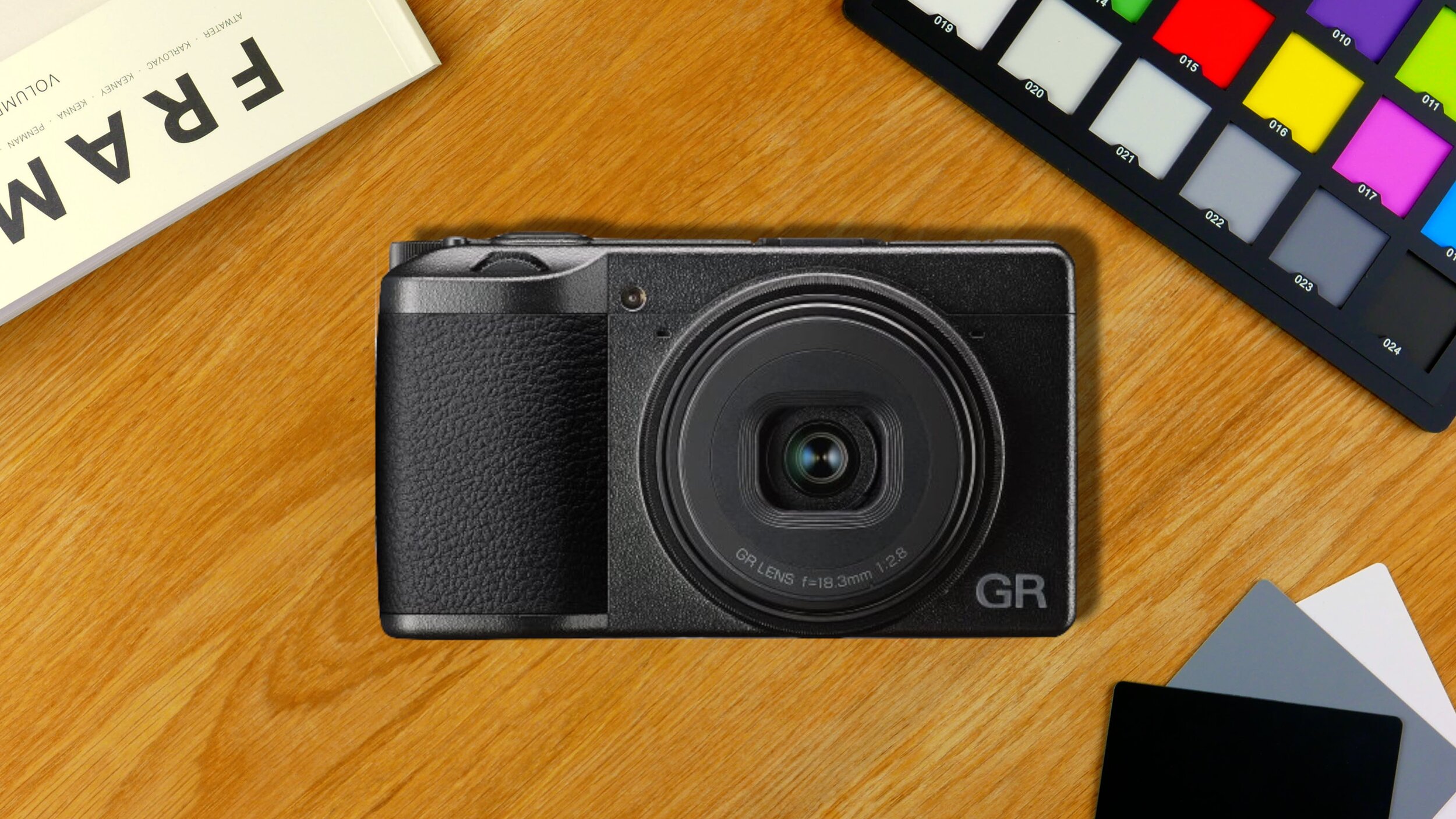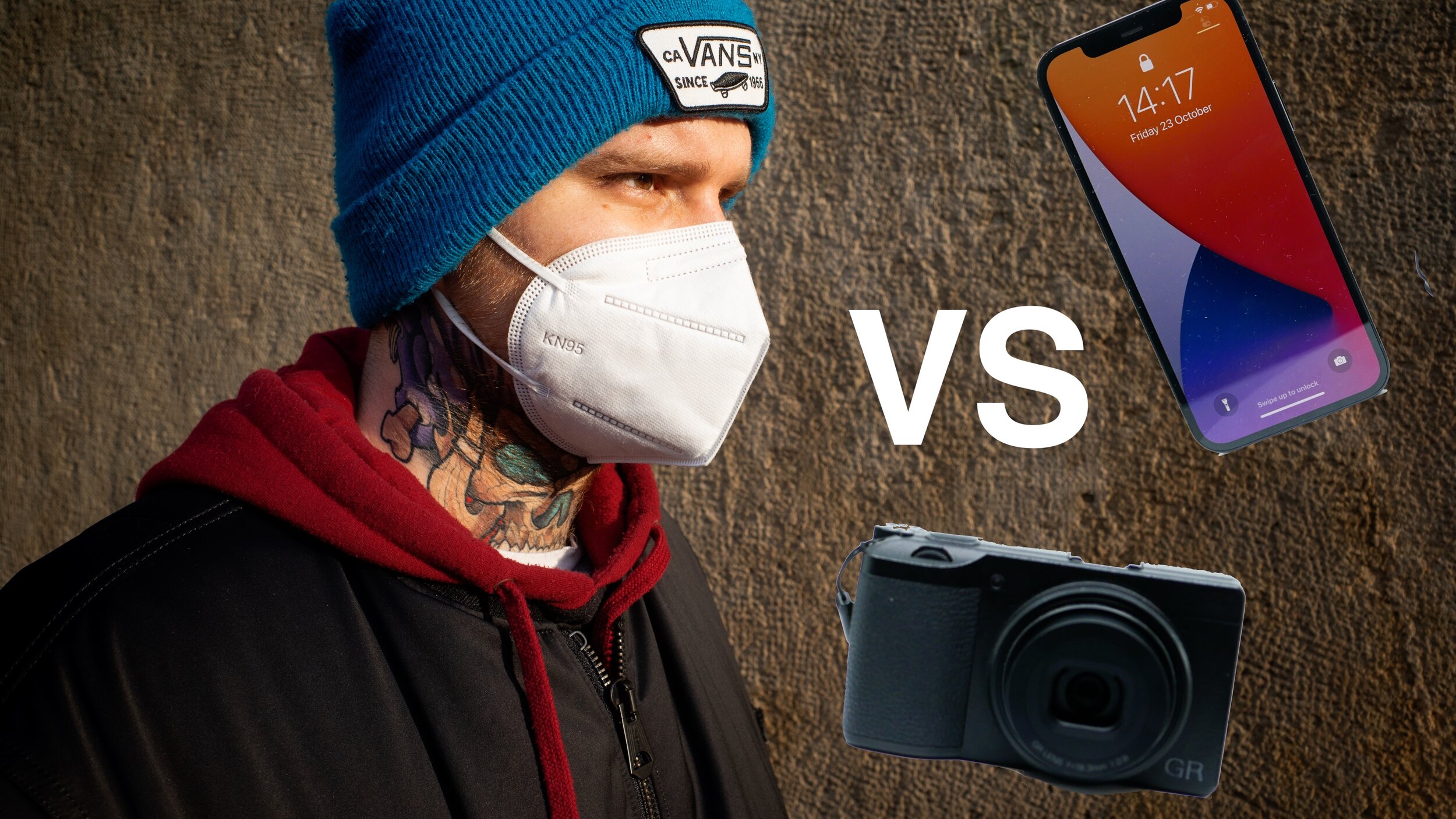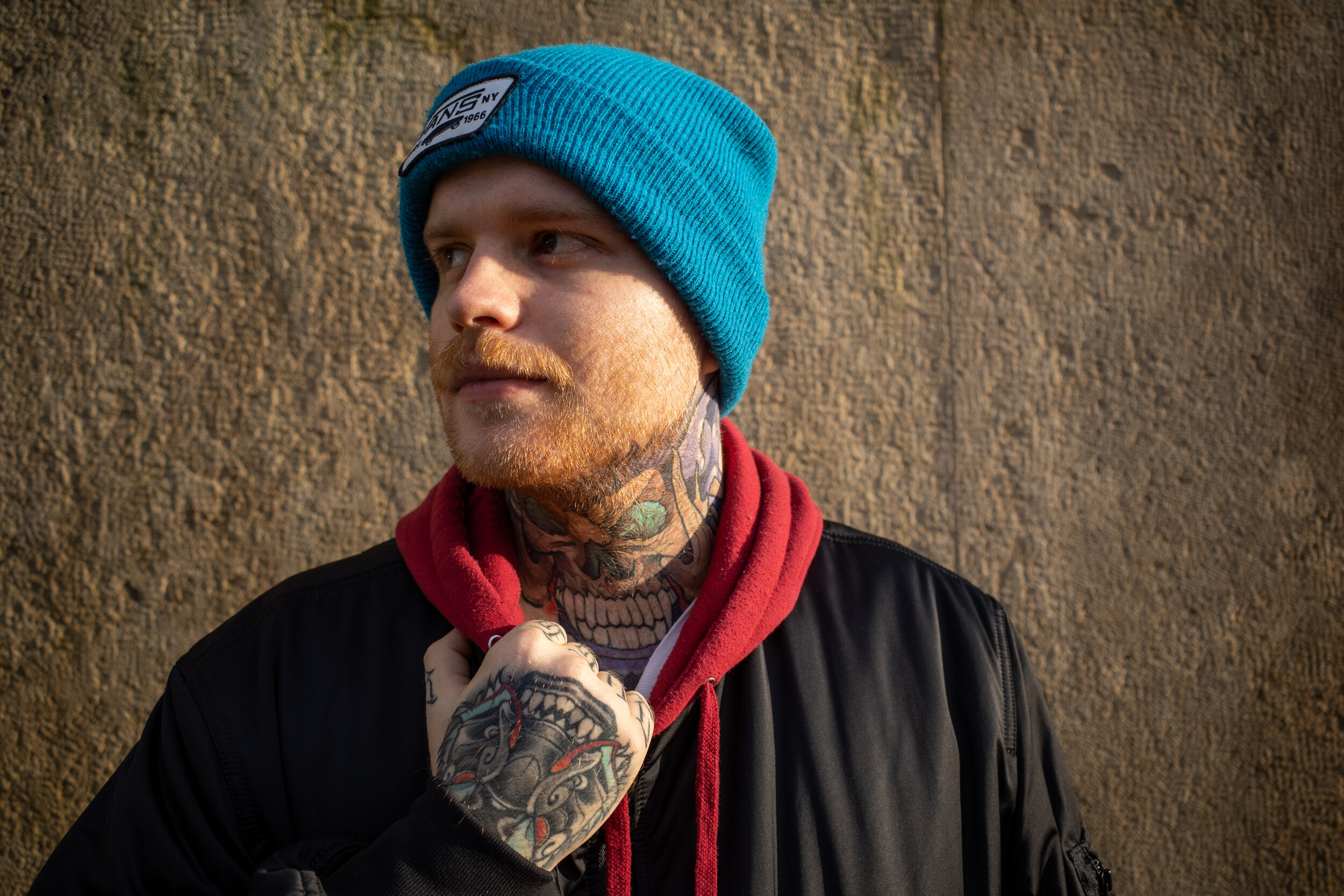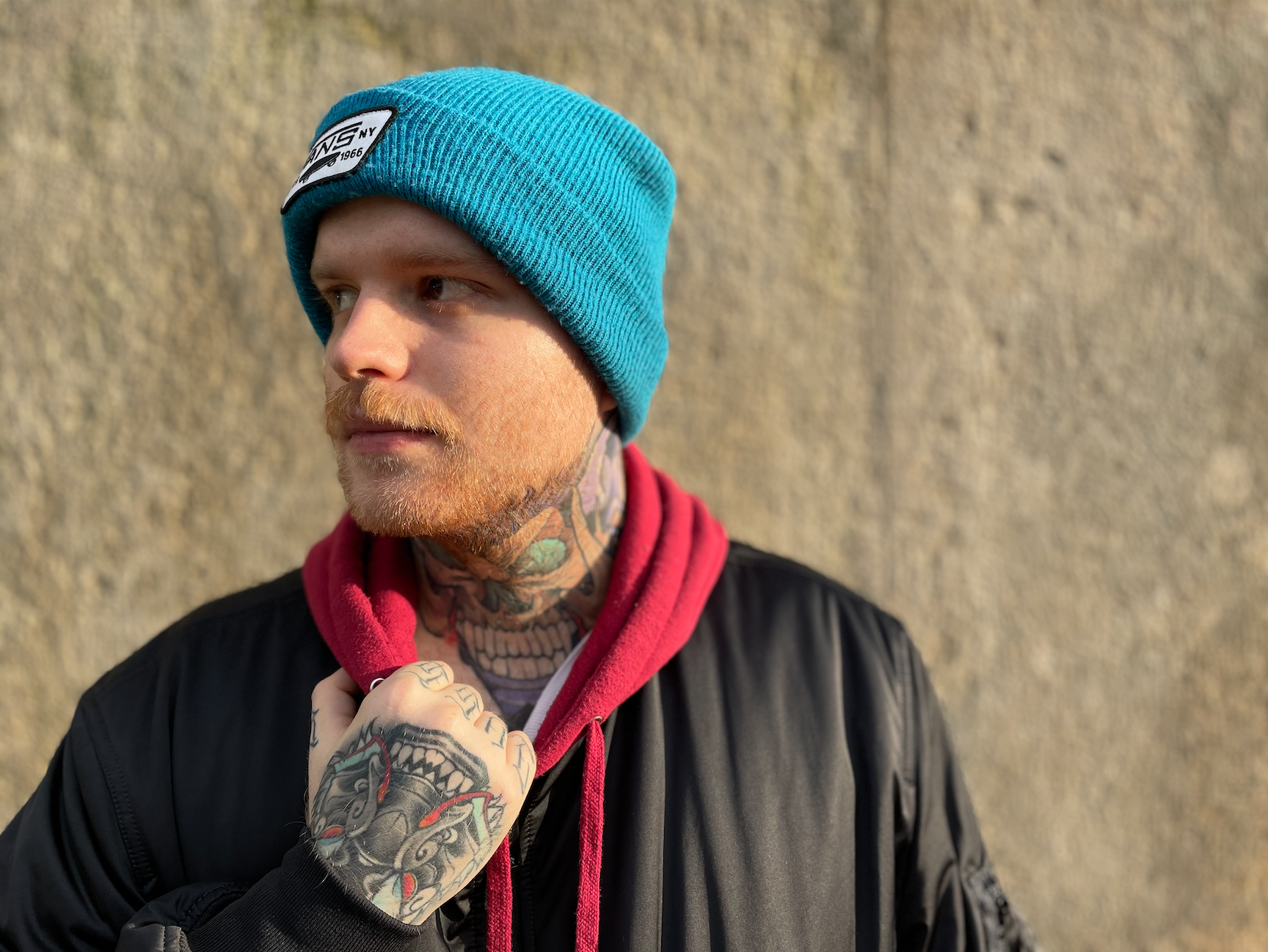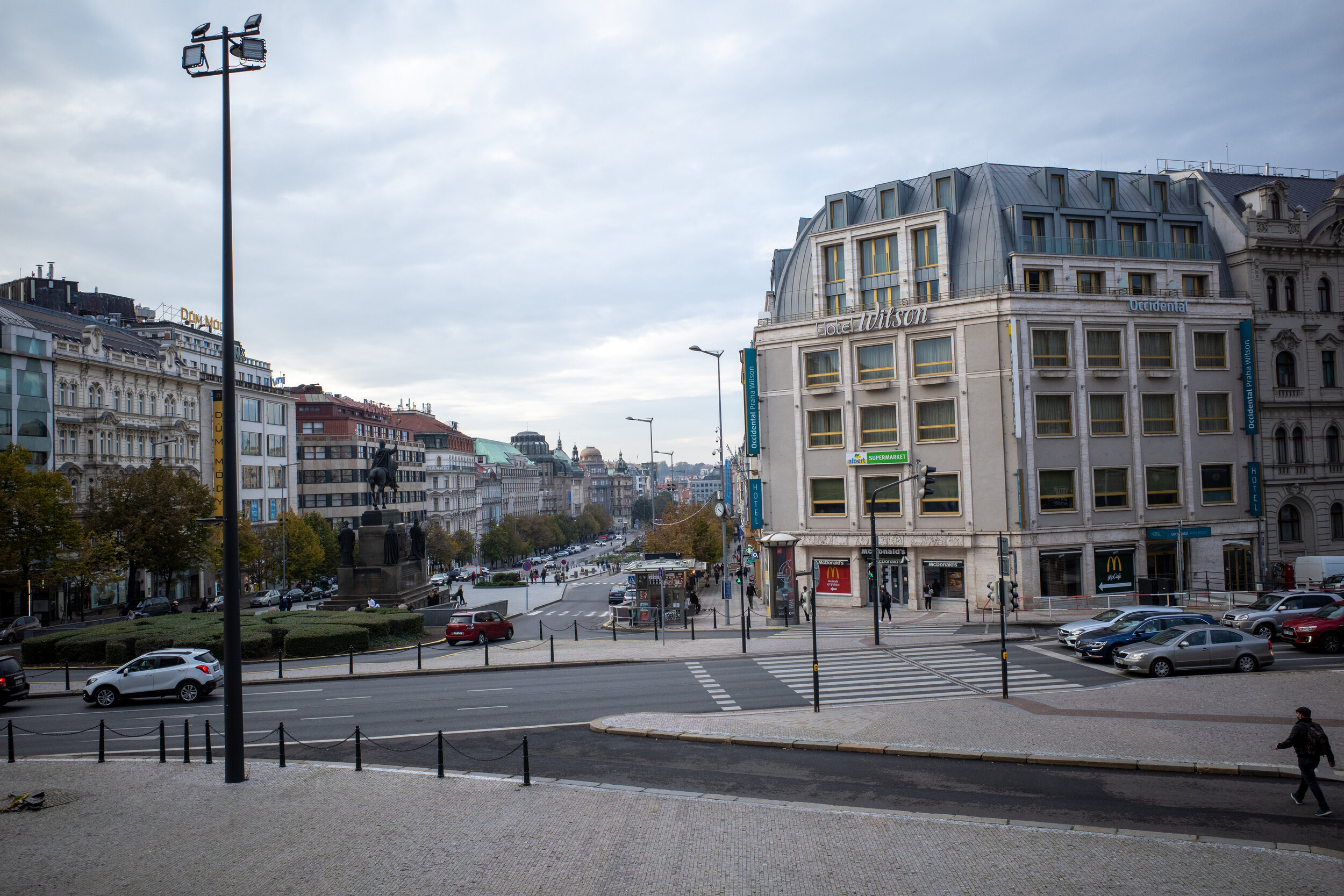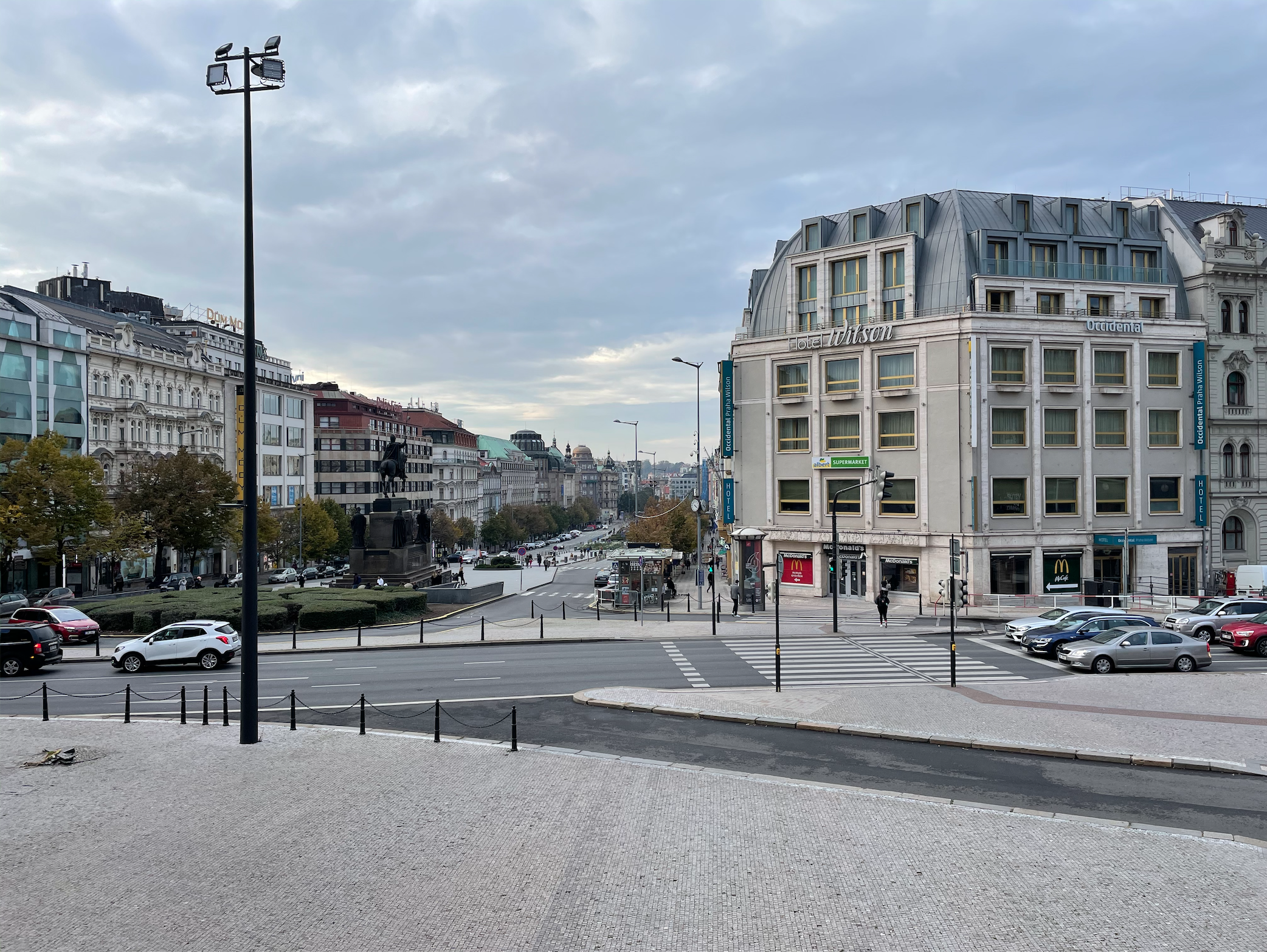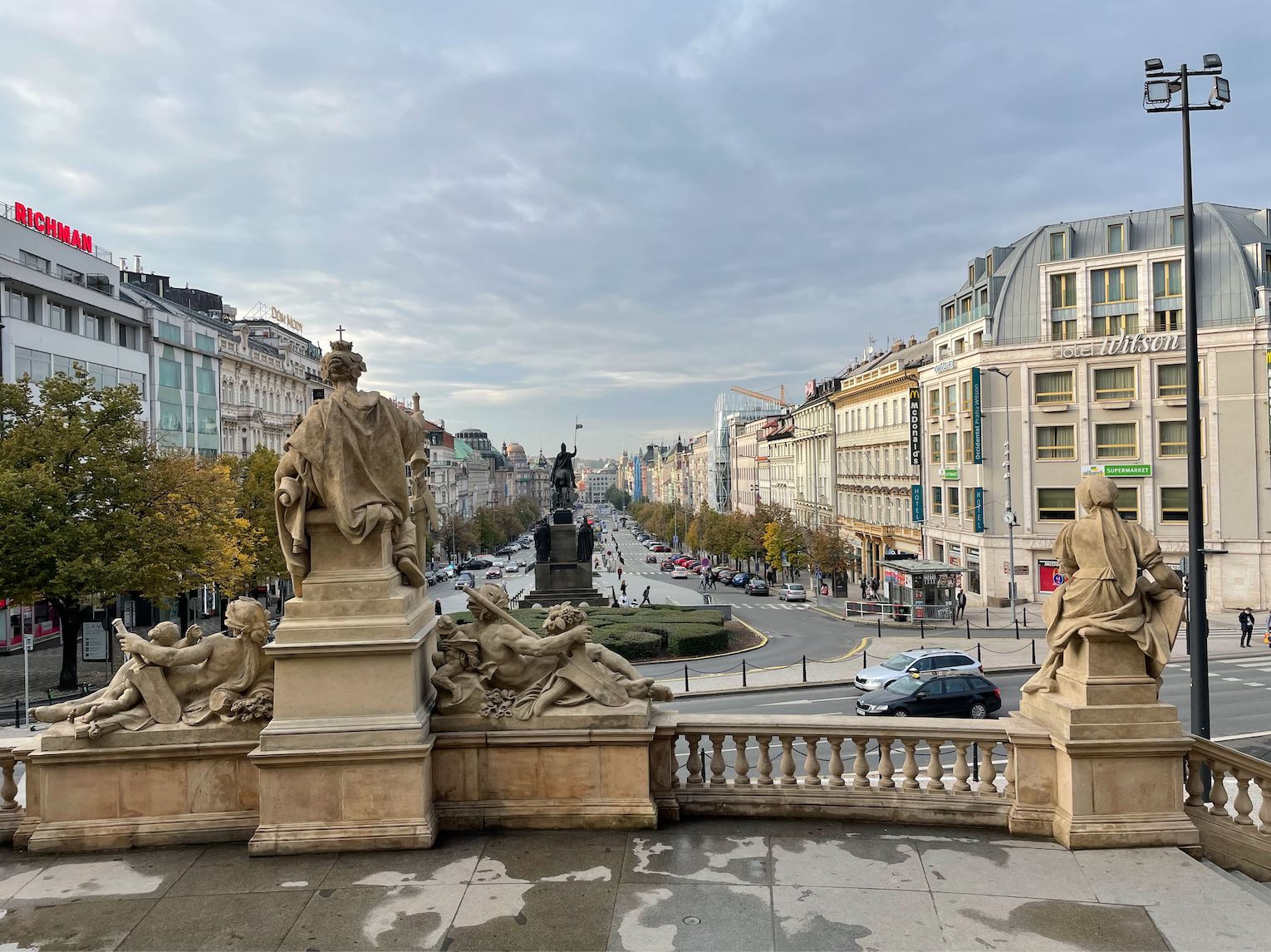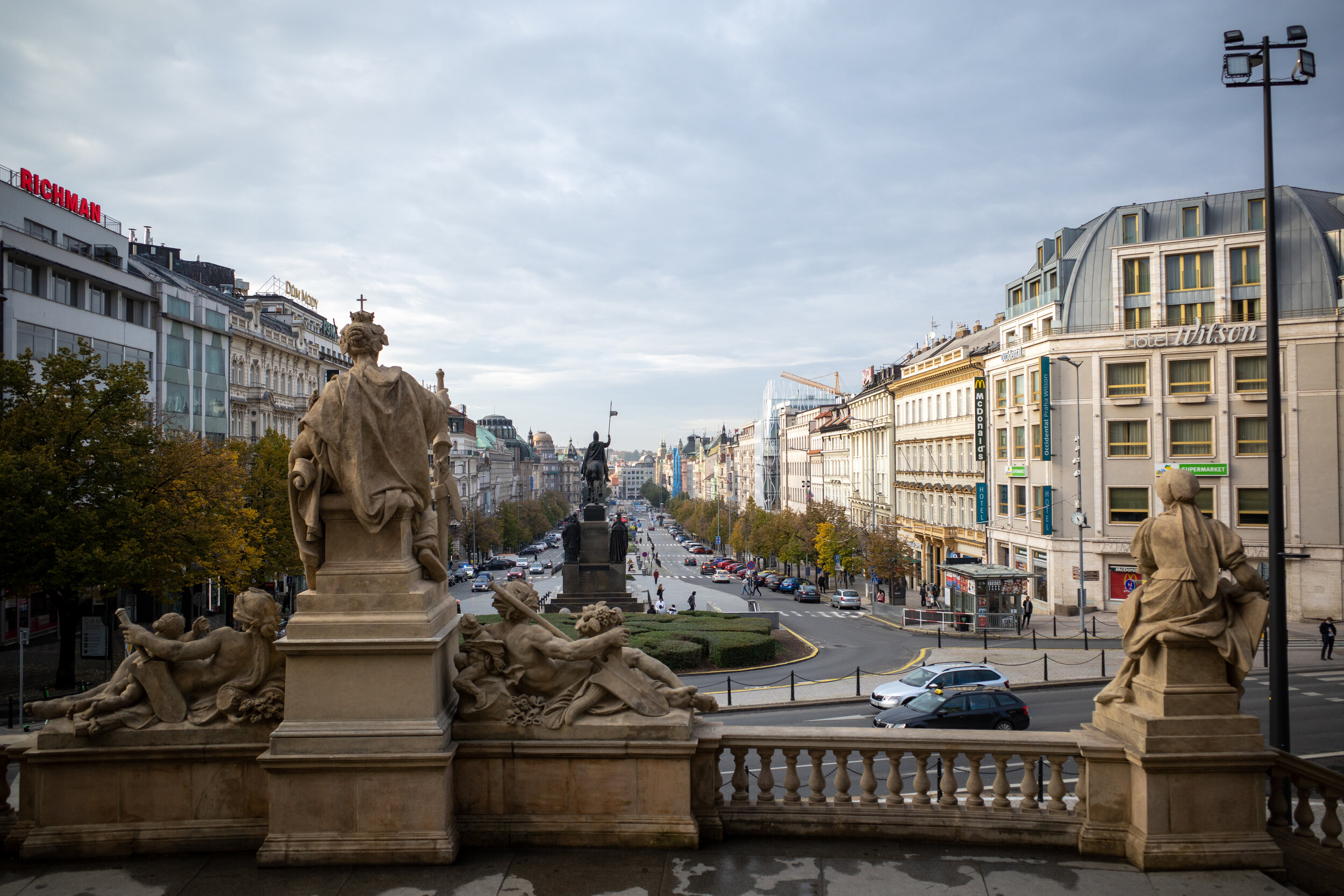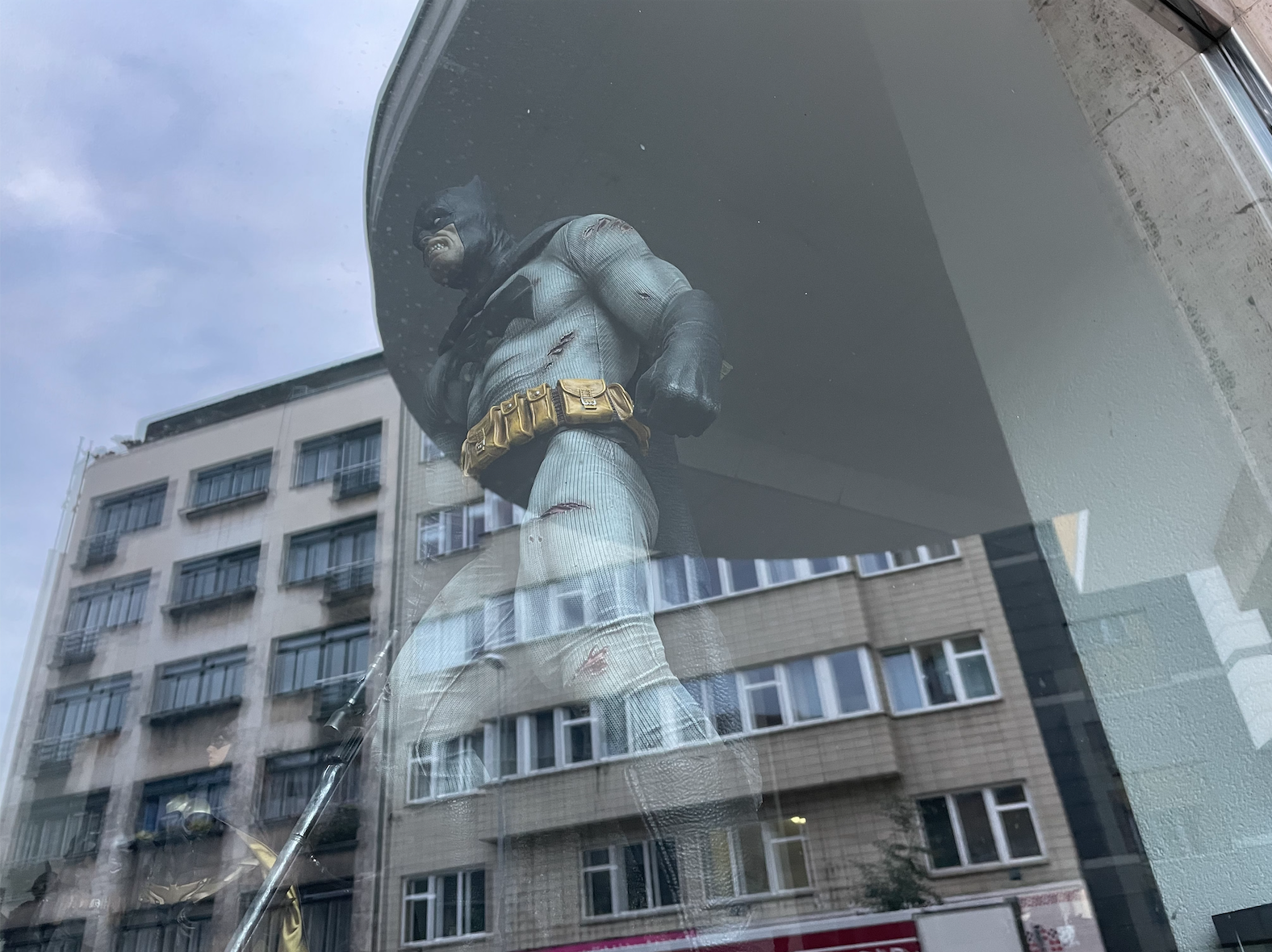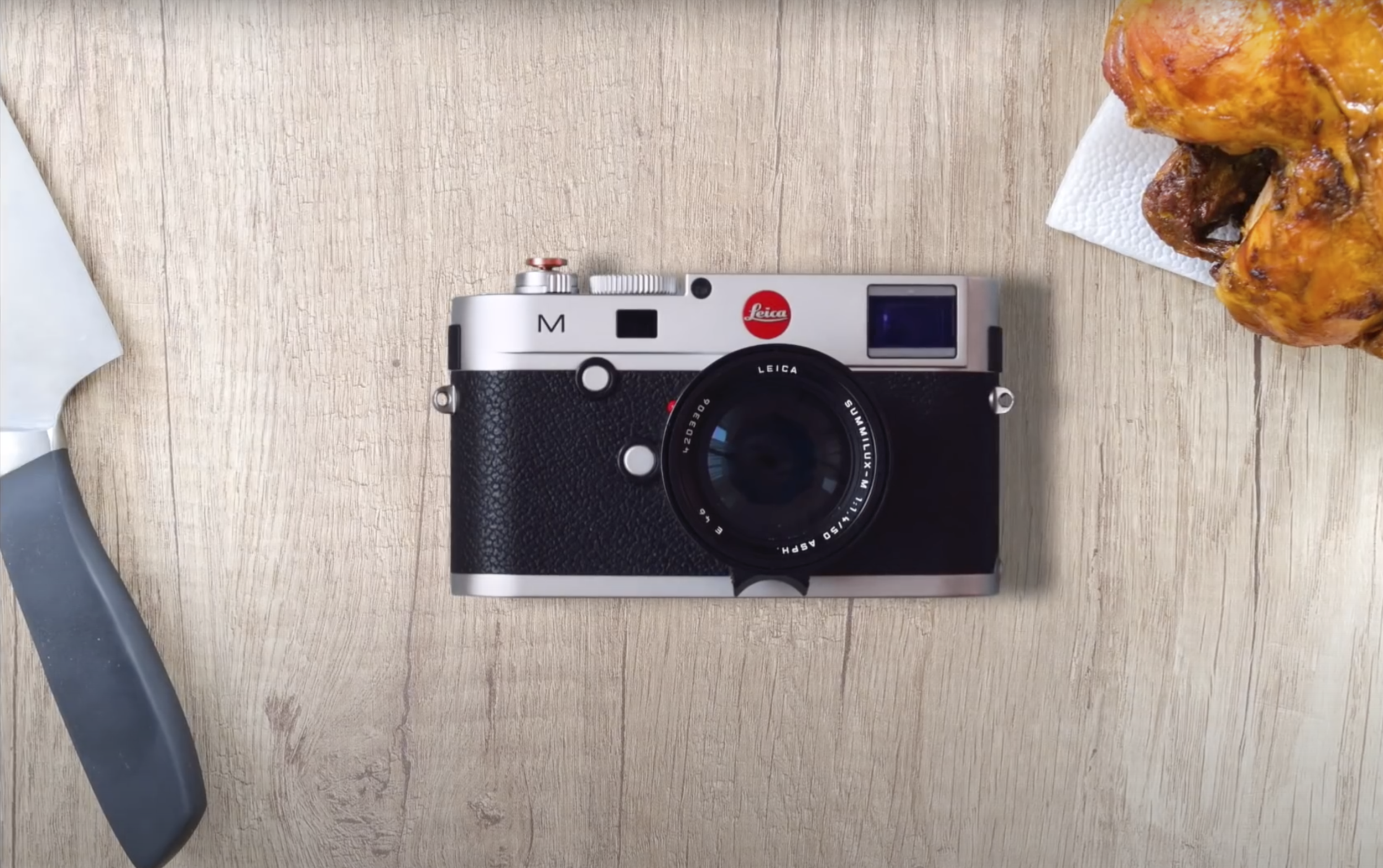5 Cameras YOU Should Avoid!
If you are watching these photography videos there is a high chance that sooner or later you are going to buy a new camera. And as we all know photography is not exactly a cheap hobby.
If you are watching these photography videos there is a high chance that sooner or later you are going to buy a new camera. And as we all know photography is not exactly a cheap hobby.
Maybe it is going to be your first more expensive camera or just the next one in line. You might have an idea about specs, brand, and lenses. However, there are still many pitfalls you should watch out for before you make your final decision. Here are 5 kinds of cameras you should definitely avoid.
The camera that you will not take with you
It was Chase Jarvis who said that the best camera is the one you have with you. It was then used by many including Steve Jobs while promoting the portability of the iPhone. And when you think about it, it actually makes perfect sense. Whether you buy a camera for work or just for amusement it is an investment that pays off for you by actually using the camera. That is why the first kind of camera you should avoid is one that you won’t often take with you. Maybe you want to buy a big DSLR with a huge telephoto lens or two. Think carefully are you really going to take your gear outside that often to be able to justify your purchase? Maybe none of this is the case for you but it is a consideration worth making before it is too late. I know because I have been there. I remember my walks with my Leica M240 and even though many people will tell you the camera is overpriced I loved it for what it did for me and how I felt with it and I still do. But travelling through developing countries or less safe areas I often felt very uncomfortable carrying around a camera that was this expensive. Later with kids and packing a lot of stuff for them, I am just happy to slip my Ricoh GR in my pocket and not worry about it.
The camera with features you think you need over the ones you will really need
This kind of example brings me to the second type of gear you should avoid buying and it is the one with features you think you’ll need over the ones you will really need. Let me explain. With camera companies releasing new cameras every year it can be tempting to reach for the latest and greatest, right? But when you think about what you are really going to do with the camera you might realise that you not only don’t need to buy the latest tech but it will also save you a lot of money you can use later to actually get better at photography. I know, it can be tempting to get the latest camera with 20 frames per second in continuous autofocus. Well, if you are shooting the Olympics and need to deliver this is, of course, an awesome feature to have. But if you are going to shoot landscapes, then not so much. Buying a 1.4 lens can give you awesome bokeh but when you end up shooting street photography with F8, you don’t really need it.
Buying a camera you cannot afford
It happens to all of us, especially when looking at the second-hand camera market. You pick a lens or camera body you want to buy new or in this example used and just when you are ready to pull the trigger you find a slightly faster lens or slightly newer camera body and of course the price is a little higher. Just a little bit. However, since you are looking at gear that costs a bit more you may as well look at the cameras at that similar price point. You find something else that is in a similar price range but you know it is a little more expensive. The faster, lighter, newer gear will let you do much more and better, you tell yourself. But then, you see another... that, again, costs a bit more, and before you know it you are looking at gear that is totally out of your budget. You can tell yourself how you can manage to pay for the camera. How you will work overtime or sell your other gear to make it work. But let me tell you, it is not worth it. There is always going be gear that is a little bit more expensive than you saved up for. But stretching it too far can be a great mistake. It may seem like a good idea at first but you will thank me later when you actually enjoy your camera free of stress because you need the gear to pay for itself.
You should not get the camera someone else tells you to get
The internet revolutionised the buying process of new cameras since you can compare all the specs very quickly and easily. You can also find many reviews and opinions of experts but also users that have already purchased the one you want. However, with all of that useful knowledge come as many opinions as you can imagine. And it is fair to say that the more people get their hands on the product the more information is available to us to make the decision. Research has never been easier than nowadays. The downside is that there is always going to be that one opinion who hates your dream lens or camera you saved up for. And even though you know you should ignore it because it is nonsense it still stays in your mind. So you set your mind on the new Leica Q 2 monochrome. You love the design, you love the brand, and you are watching review after review to confirm your thoughts. And there it is that one guy or in this case group of people who think it is a waste of money, Leica is overpriced and overrated and you should buy a Sony or Canon instead – which you really don’t want. Somehow those comments are really so persuasive that you start to doubt your decision. That is why the next camera or lens you should not get are the one someone else tells you to get. Opinions of other people are just you know - opinions of other people. Only you know what is best for you and how you going to use the camera.
Buying a camera just because you have money (overcoming the GAS)
You probably know this one as it is discussed very often. You are not happy anymore when you look at your photographs. You start to blame your gear which is old and boring and the new one you just saw will definitely make you a better photographer. You buy the new gear but after a while, you realise you are at the same spot again. Instead of learning how to actually use the gear you already own you browse the internet to find new “inspiring” camera bodies and lenses. Maybe some of your friends suggest you should rent the gear to find out if you really need it or even sell some you don’t use. But that is nonsense, right! Why would you waste money renting the gear if you already know you are going to buy it? You promise yourself to go out every single day with the new camera even though you have been just sitting home browsing the internet for quite some time. With this one, it will be different! And there it is. The next camera you should avoid is the one you buy just because you have the money for it. Gear Acquisition Syndrome Is kinda famous one among photographers and it is not so easy to get rid of it. Well, first you have to admit you have the problem to be able to fix it.
That being said we should probably talk about the gear that you actually should get if you decide that your iPhone is not good enough for you anymore. As photographers, we tend to be obsessed with the stats of new cameras and that is not a bad thing. Read the reviews, go check out the gear in the store. Consider renting if you are not sure you are going to like it. Don’t switch to a different model at the last moment before you make a purchase and when you eventually decide what you want do not let few bad reviews get into your head to change your mind.
I hope this article helps you with your next purchase. If you have your own advice on gear that should be avoided please share it in the comment.
Is the Ricoh GR III still worth it in 2021?
If someone asked you what type of camera is the best for street photography, what would be your answer?
If someone asked you what type of camera is the best for street photography, what would be your answer? In the early 2000s, when digital street photography was only for hipsters your answer would probably be some kind of stylish rangefinder, and, if you had an extra kidney to sell, maybe even a Leica M. This has all changed when Ricoh introduced the Ricoh GR in 2013 (also before that GR Digital series in 2005). Fast forward to 2019 and the new GR III took the street photography community by storm. And by that I mean - a lot of YouTube channels made videos about it.
So what is so magical about this 28mm fixed lens APS-C camera, created by the company whose biggest success in the photography world, so far, was acquiring Pentax in 2011? Well, when you ask photography experts on Facebook, you might get mixed reactions.
As you can see, this camera is definitely not for everyone. And, just like you wouldn't use a chainsaw to slice your bread it doesn't mean it is a useless tool. The Ricoh GR III is by no means a one trick pony to do it all. That's what your iPhone is. The Ricoh GR III is a highly specialized tool that will not tick a lot of boxes. You can think about it like a particular type of knife in the kitchen that you use very occasionally—it’s only useful for one or two specific tasks, but for those things, it delivers in spades.
As already mentioned, the lens is F/ 2.8, 28mm eq. which is really the only focal length you will get from this camera without cropping. That means you will have to use your legs to zoom in or out. Now, I know it is technically not zooming since you’re changing the perspective, but you know what I mean.
The autofocus is something that would definitely deserve more love since it feels a little slow from time to time. But what the GR III lacks in autofocus it is supposed to make up for with the snap focus. Which is essentially zone- focusing that can be set to a distance more or less to your liking. For me personally, this works in 100% of cases and helps me to create beautiful abstract out of focus images, as my skill for guessing the distance is pretty low.
But there are some features I do know how to use and actually like. Highlight weighted metering is one of them. What it lets you do is to expose exactly for the highlights instead of that middle of the road-ish exposure you would normally get, which often results in the dark areas being completely blacked out which I like a lot.
My second most commonly used feature is the touch-screen shutter release. Now, this might be a very widespread function among cameras but since my Leica M does not have a touch screen it is new for me. And apparently, this is also new for a lot of Ricoh GR users as this function is only available in the latest firmware version. So if you have, for some reason, not updated yet, you should really go for it.
Fortunately, and just like FRED ABERY mentioned in his article (https://petapixel.com/2020/11/14/ricoh-gr-iii-a-real-world-review-from-vietnam/), you don't have to worry about accidentally activating the touch screen with your nose when using the viewfinder, because this camera does not have a viewfinder. And for those photography snobs saying the viewfinder is the only good option to compose the picture, I will tell you this. It isn't.
Now, on a little more serious note. I have been saying for a while that the LCD screen is a new viewfinder since you can easily see what is included or left out of your frame unlike when using EVF with the frame blocking your outside view.
One of the online complaints I see a lot, is that, it’s a camera that is expensive and only features an F/2.8 lens, which for me doesn't matter that much. I dare to say the majority of users are going to use this camera for one, and one, specific purpose only, which is street photography. Ricoh even makes a special street photography edition of this camera which ironically is less stealth with this big yellow circle around the lens.
Anyway, because of that, the most common F stop is probably going to be F/8.0. However, the one use case where this camera could use a faster lens is in night photography. Otherwise, I do not really have a problem with the lens.
Yet, there is still so much to love about this camera. Easy to set custom modes, weight, and especially the size. I mean try to fit an interchangeable-lens camera in your pocket. This camera slips into your pocket and I usually take it with me with just the wrist strap. I also do not carry any extra batteries, but I am not a heavy shooter. I never ran out of batteries during my shooting sessions so I cannot honestly tell you how many shots you will be able to take with just one battery. But, I would much rather bring a USB-C cable with me to charge the camera while having a coffee than carry an external battery.
Also, this camera is super light. Unlike with big DSLRs, which can make you feel like you are practicing for this brick-around-your-neck carrying competition, you will not even notice the light GR. Don't get me wrong, I love bigger cameras and understand their place. There is probably no way you could show up on a commercial photoshoot with a camera this small or have this as your only camera, as, for example, a portrait photographer. All I am saying is that this camera fills a very specific gap on the market. However, if you find yourself in this narrow niche I am convinced this camera will not disappoint you.
iPhone 12 vs Ricoh GR III for Street Photography - Which One Should You Pick?
Today I am going to challenge the Ricoh GR III which is I think the king of street photography with the newest iPhone 12.
Hello photography fans. Today I am going to challenge the Ricoh GR III which is I think the king of street photography with the newest iPhone 12. I want to take a look at if the new iPhone will be able to replace at least to a certain degree your camera and if it still makes sense to buy a compact camera if the street photography is the main genre you want to use it for.
I think this comparison kind of makes sense when we take a look at the form factor of both "cameras" and the price point. Now just to be clear the iPhone is probably going to beat the Ricoh as better overall camera. It is definitely more versatile with those 2 cameras and very good video specifications. However, when you buy Ricoh GR III you don't buy it to film videos with it or for the zoom lens - which it doesn't have. We Ricoh GR users use legs to zoom in and out. I dare to say the majority of users is going to use this camera for one and one specific purpose only which is street photography. It is a compact camera and it fits in your pocket so you can actually take it with you in almost any situations. Now, that is where I see the iPhone as a close competitor.
Ricoh GR III was released earlier in 2019. It has 24 MP APS-C sensor with 18mm lens F 2.8 which is 28mm equivalent. It has 3-axis in-body stabilisations system. Touch LCD screen and it can be charged with USB type C.
The iphone 12 is equipped with 2 cameras, Wide and Ultra Wide. Which translated into english is 13 mm and 26 mm equivalent. It has a new sensor image stabilisation and Apple claims you can take up to 2 seconds handheld exposures. Which is a bold claim, something I am definitely going to test out. There is also a feature called Night mode which helps you to take better pictures at night . Apple PRO Raw and the Lidar scanner is something Apple reserved for the "PRO" version which I will hopefully be able to test out later this month.
So let's talk about controls. Right from the start we can see that Ricoh offers more photography settings because - well all the settings are about photography. However, this can also be a benefit if you just want to shoot full auto and not worry about anything else. What I love about Ricoh is that you can save 3 custom modes which you can adjust to your liking. My most favourite function is the “highlight weighted” metering feature which let's you expose just for the highlights. Something you will need to download an external app for on the iPhone. Another great feature of GR III is the ability to take a photo with a single tap on the LCD screen.
iPhone on the other hand is the king of social media. But not only that. You will appreciate the options to simply share the photographs via iCloud and photo streams not only for your family events. iPhone also has this beautiful OLED screen which is twice as big as on Ricoh. With the iCloud plans you can basically take infinite number of photographs. With Ricoh you have the option of 2 GB of internal storage and memory card slot. Which again can be a benefit depending on what you want. It can also take HDR photographs which for casual shooter can be a plus. But something you might not really want or need if you do street photography. The iPhone is charged with the lightning connector which is annoying considering everything else uses USB type C but you know. What can you do.
For this test I was using the default camera app and I have to say I was pleasantly surprised that it has been improved a lot. Where used to be the black side bars on older iPhones we now have this transparent frame. Apple is probably using the ultra wide lens to show you the surroundings of your frame. Now, I have been saying for a while that LCD screen is a new viewfinder since you can easily see what is included or left out of your frame. With this new feature. Which is limited to new iPhones we are getting once again much closer to that. The ration is still limited to 4 by 3 unlike in any "standard" cameras. But I think in the end it is just a signature of that medium. When you see a square image you usually think of medium format. When you see 4 by 3 you know it was taken with a smartphone.
Now let's talk about the image quality. To be hones I was quite surprised that the iPhone with a much smaller sensor is able to produce photographs with such details. When you check the file size. The RAW photos from the GR are approximately 10 times bigger so they store more data to work with. iPhone on the other hand uses powerful new chip for its smart HDR and computational photography. This can be a plus for casual users and iPhone is going to be a killer for those family vacations. Ricoh on the other hand offers much more creative options. The resolution is approximately twice as big as on the iPhone. You would however have to print actually quite large prints to see the difference.
Even though the iPhone is equipped with F 1.6 aperture it hardly produces any bokeh naturally. I would say it doesn't matter that much for street photography since you know, if you are not Thorsten Overgaard you don't really shoot wide-open all the time. I usually end up shooting F 5 to F 8 with my full frame. That being said iPhone has some kind of artificial bokeh in the portrait mode. I believe the iPhone creates layers in the image and then artificially applies blur to make the background layer out of focus. Interesting thing is it offers you F1.4 simulation even though the lens is only 1.6.
This of-course looks ridiculous but if you play with it you can find a sweet spot when it actually looks fine. I think this one works best with the 5.6 version. Apple also has something called LIDAR scanner to improve the focusing and also portrait mode but they saved it for the iPhone 12 PRO.
The night photography is fine. It uses something called night mode which is a combination of longer exposure and computational photography. It also uses little too much sharpening and contrast for my taste. I think if Apple can get to some kind of compromise when it applies its filters but still keeps the RAW file untouched to work with it would be great.
I played with iPhone 12 for one and half day so those really are my first impressions .
Anyways, for actually photography process the Ricoh beats the iPhone with the grip. Holding the phone is never as good as a tactile camera with "feedback". Unless you are going to use some kind of grip for the iPhone, which honestly you will never use. Also holding a phone while taking photos makes you look like, . . . well someone taking photos with the phone.
So to sum it up I just want to share with you the pros and cons of each device.
The Ricoh GR III is highly specialised tool which will not tick a lot of boxes. You can think about it like about a special knife in the kitchen you will use from time time but when you do it delivers. It offers more settings which can be useful to some and overwhelming to others. As well as controls of shutter speed, aperture and ISO. It offers better image quality but I thought the different would be even greater . It is useful if you want to print larger images but for your standard 15 by 10 cms photographs the higher quality is going to be hardly noticeable. So over all I would say The Ricoh is better for creative photography
The iPhone 12 on the other hand is this Swiss army knife which can do a lot of things and do them very well. The computational photography is perfect for the times you don't want to bother with photo-editing but it also limits your creativity a bit. Maybe the Apple PRO raw and Lidar will change that with iPhone 12 PRO. I would say if you are complete beginner the iPhone and especially iPhone 12 pro offer a great value. You get 2, respectively 3 lenses. It takes great video which you can use for vlogging and it is a perfect camera to have around for family events. The image quality is worse than Ricoh GR but if you are only sharing on social media it is hardly noticeable.
I think it is exciting how much the smartphone photography was able to improve and I wonder what we are going to see next. When I was watching the Apple event I was just wondering what would be possible if Apple produced a full frame camera with such computational power. Well anyway, let me know what you think about it if we should expect the smartphone industry to take over. Do you like the new iPhone lineup for street photography and if you don’t what is that thing that the phones are still missing?
Check out the video for more images and video footage examples.
Review - Is Leica M240 still worth it in 2019?
Today I want to talk about my Leica M 240
I have been using Leica probably for more than one and half year and I got it because I wanted to buy a range finder camera and I ended up with M240. I have only one lens and thats all I have been using. So this is my minimalist setup for shooting. I am gonna share with you what has been my experience and settings I use.
So why range-finder? Unlike many reviewers I have actually not shot too many cameras in my life. I have started with Leica D-lux 109 and the reason back then was… I really liked the design and it came together with a free copy of Lightroom and that kinda justified the price. More I was reading about cameras I actually felt like every company it trying hard to chase the Decisive moment - with higher and better ISO performance, more frames per second or faster autofocus. And then there was Leica M. I kinda felt like - when you go out fishing. You can either take an old fishing rod and do everything manually and you are risking to miss a lot of things but it takes some skill and you really have to think about the process and the settings and so on.
Now... I am not saying you don't need a skill to shoot DSLR but for me it kinda felt like having a shotgun in comparison with an old fishing rod and you just shoot and spread and then pick one shot out of the burst. And it depends you know... I definitely like, the cameras like Sony A9 where you do those 20 frame per second and I would definitely think about that in case I would go let’s say to the olympics and had to deliver. So i guess it pretty much depends on what you are using your camera for But for me for what i use it Its jus not the case at the moment.
So, why M240? When you want to get into the Digital m system you actually have a several options. It starts with M8 and ends with just recently released M10D.
So, I knew I wanted to get a used Leica and I also knew I don't want to get too narrow with my lens. Not more than 50mm. So when I actually found a great deal and got a 50mm lens I didn't consider getting the M8 because of its cropped sensor. So, I was deciding between M9 and M240 and I actually found an M240 that was just slightly more expensive than M9 AND it was actually almost new. So thats why we can probably all agree the M is a beautiful camera. The design is based on M3 and it remained more or less untouched and It has this retro look, especially this chrome finish
Now when you look at the camera you can see there are 3 basic settings outside. Focusing. Aperture ring and shutter speed. Those can be set even when the camera is turned off.
Unlike the old Leicas, this is full of electronics so when you remove the bottom plate you will find your memory card slot and the battery. The camera will actually not work in case the bottom plated is not connected to the camera.
When we are talking about battery, I have actually never run out of battery. I think I get more than 600 shots on a battery charge but it also depends on a temperature or if you use the live view, video and so on. You get this charger to charge your battery when you buy the camera. It comes together with a cable. One thing I have figured when I am travelling and I don't want to take too many cables with me, you can actually use a part of your iPhone or mac charger. Plug it in and use it like this.
One thing to note is this camera does not have electronic shutter but I would say its pretty quite. especially on the street. You can set it all to way to 4000 or you can use Auto. Lot of people actually dislike the auto mode, but I mean those functions are there to help you and I also use it some times when I am unsure or just to figure out what the camera suggests at the moment.
M240 actually has a video button and to be honest. I dont really know why you should want a video in this type of camera. It doesn't not have an image stabilisation, no HDR, only 25 frames while shooting 1080, no mic impute, no headphones, no HDMI port. No Flat profile. But you know it's there and the best camera is the one you have with you.
The cool thing is you can actually use the manual focusing to create nice focused to out of focus shots. not like you can not do that with an iPhone. I like it has microphone even thou I would place it to the bottom probably or somewhere where it is not visible and distracting . I mean. You will probably never use it as your main audio source. but its nice to have it for audio synch in the post.
The ISO has its dedicated button and you can change it using this wheel WHILE holding the ISO button. It was actually little confusing at the beginning.
So the base iso is 200 but when I was watching Thorsten Overgaard he said the dynamic range tops at 400. So thats good to know.
When you check the view finder you will notice you are not looking true the lens and that why what you see is not what you get due to the parallax -There are 3 types of marks in the viewfinder, left arrow right arrow and dot. What they show you is you are either under or over exposed. At the beginning I had little problems to remember whenever I should over or underexpose so actually thought myself a little trick. When you see the red arrow pointing the the left. You either has to move the upper part of your aperture ring to the left or move your shutter ring to the left. If that makes sense to you. Or vice versa if it points to the right. Or you have to change your ISo.
The focusing is actually little tricky at first but after some time you will quickly figure it out. As for the focusing you have few options to approach it.
The easiest one is to bump up your ISO and use for example F8, f 11 Together with that when you set your focus to infinity you can use your camera as kind of point and shoot for distance 5 meters and longer.
You can also use zone focusing where figure out the distance according to the f stop you use and you actually see on the lens what distance is in focus for each F stop.
When you are focusing what you actually see is this small rectangle with a “ghost image”. The key is to line up both - what you see and the ghost image. also little tip here when you need to move your ghost image to the left, you can imagine you need to move the upper part of the focusing ring to the left. Great way to focus on the moving subject is actually start at infinity and then slowly as your subject moves you move the focusing ring to the other side. Considering you are trying to focus on subject moving toward you. Since I think thats gonna be 90% of your shots.
When you look at the back you can see this camera has its dedicated Live view button. I actually find Live view quite useful. Especially for those low angle shot but it also works for me as an light meter. I ofter just turn it on and figure-out what is the right speed for the shot I want to create. I would not probably use EVF since i think it kinda kills the whole point of having the rangefinder and especially when you have the option of live view. Whats cool about this viewfinder is - you actually see around the borders of what you are shooting. Its also little similar when you are using the life view. except what you see on the screen is actually what you get.
So what is my setting when I go out to shoot. I usually go out when there is plenty of light so my typical setting is F8 ISO 800 and then I am adjusting either shutter speed or if I am getting under 180 I am adjusting ISO.
I rarely shoot at night but when I do I shoot only wide open with high ISO. Otherwise it does not work for me.
As I said I have only 50mm lens and I use it mostly for street photography, portraits but I mean you can actually also use it for landscapes. It's just not that convenient because. you know, its not a wide lens.
When I want a wider shot - I move a little back. When I want little tider shot - I move closer. So, lets talk about some pros and cons
This camera is Heavy. I mean you will find out as soon as you hold it in your hand. But again Its probably lighter than a big DSLR. I think my combo of body and lens is like 1kg. So it’s like - you will feel it a little once you carry it for the whole day. Not the end of the world but still…
It does not have an autofocus - I mean that’s obvious and its expensive. Even though if you do not need the latest greatest you can find used ones for pretty great deal.
Now on the other hand - This camera is quite small when you consider it is a full frame. It's Great looking - no doubts about that. It’s actually pretty Easy to use. It does not have an auto focus. I know I have mentioned it as a minus but I think its also actually a good thing. Let’s say it would have the same option as Leica Q or in my case the D-lux. To have and auto together with manual focus. To be honest, I would probably never used the manual focus. I mean. How many of you are using the manual focus except for like situations like staged portrait or macro. By not having the option this camera actually forces you to learn it.
So should you get Leica M?
So, If you are totally new I would probably recommend you to loan one before you buy it so you know what you are buying. You can get a cheap option with Leica M8 and Voidlander lens but it’s hard to recommend this since I think M8 is already discontinued and It would be expensive to repair it eventually.
In my opinion if you can find M 240 for a great price it actually still great even tho it has been released 6 years ago. With every new M they introduce, every generations gets slightly better, lighter, faster but it is also more expensive. So it's up to you how much you want to spend.
Can this be your only camera? I mean. It can … if you don't purchase any other camera… In my case I have been using this one and my iPhone for video and that pretty much it. So it depends on what you need the camera for.
The last thing I want to point out this camera will not make you a great photographer. Thats something you actually have to learn. Let me know in the comments do you have Leica M, how do you like it or are you considering getting into the M system?





